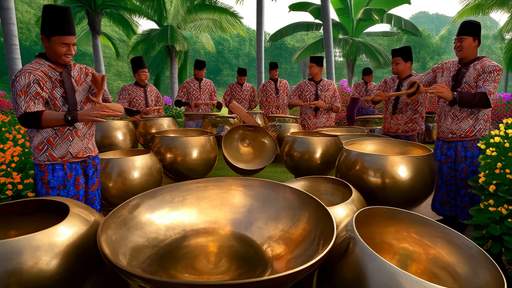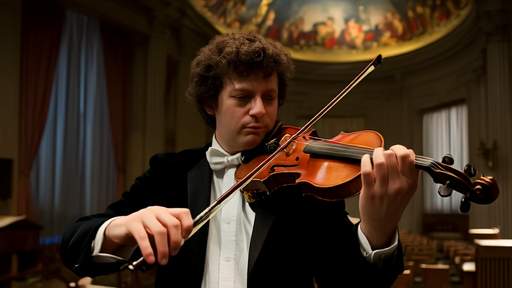In the grand tapestry of Russian history, few threads are as vividly contrasting as the sweeping reforms of Peter the Great and the quiet resilience of traditional folk culture. At the heart of this cultural tension lies the balalaika—a humble, three-stringed instrument that became an unlikely symbol of resistance against the tsar’s aggressive Westernization campaign. While Peter’s reforms dragged Russia kicking and screaming into the European Enlightenment, the balalaika’s enduring presence in peasant villages whispered a different story: one of unofficial defiance, of cultural memory persisting beneath the surface of imperial decrees.
The early 18th century saw St. Petersburg rise from swampland as a "window to Europe," its baroque palaces and shaven chins a stark departure from old Muscovy’s onion domes and boyar beards. Peter’s obsession with modernization banned traditional dress at court, imported Italian architects, and even taxed men who refused to part with their facial hair. Yet in the smoky izbas of rural Russia, the balalaika’s triangular body continued to pulse with the rhythms of pre-Petrine life. Its very existence during this period—often dismissed by historians as a mere folk relic—was in fact a subtle act of cultural preservation.
What makes the balalaika’s survival remarkable is the deliberate nature of its marginalization. Unlike the domra (a round-bodied lute banned by the Orthodox Church as "devil’s instrument"), the balalaika faced no formal prohibition. Instead, it suffered something more insidious: official contempt. Court musicians imported from France and Germany sneered at its limited range, while urban elites adopted the harpsichord with performative enthusiasm. The instrument became culturally homeless—too crude for salons, yet too beloved by peasants to disappear. Travelogues from the 1720s note its presence in villages near Arkhangelsk, where fishermen played melodies unchanged since Ivan the Terrible’s era, even as European-style naval ships patrolled the White Sea.
The balalaika’s design itself tells a story of adaptation. Early versions used gut strings and diatonic tuning, producing the sharp, percussive sound heard in wedding dances and harvest festivals. Post-reform examples show metal strings (likely repurposed from imported instruments) allowing for chromatic scales—a quiet hybridization of Western technology with Slavic tradition. This evolution wasn’t dictated by imperial workshops, but by anonymous village luthiers who modified their craft while preserving its essence. A 1714 edict demanding musicians perform "civilized minuets" at public gatherings went largely ignored in the countryside, where the balalaika still accompanied chastushki—bawdy rhyming couplets mocking authority figures, including clean-shaven bureaucrats.
Oral tradition became the balalaika’s fortress. Without formal conservatories or sheet music, techniques passed from grandfather to grandson through calloused hands. A unique playing style emerged in the Urals, where miners used their instruments’ backs as percussion during winter festivals—a far cry from the disciplined violin études favored in St. Petersburg’s palaces. When folklorists finally documented these traditions in the 19th century, they found melodies preserving pre-Petrine modal scales, suggesting an unbroken lineage. The balalaika had become a living archive, its strings vibrating with musical idioms that Peter’s German-trained composers had tried to erase.
This cultural duality reflects Russia’s perennial tension between obeisance to authority and underground resistance. While Peter’s navy flew the Dutch-inspired tricolor and his nobles conversed in French, the balalaika’s repertoire still included the "Volga Boatmen’s Song"—a pre-modern work chant later quoted by Mussorgsky as a musical symbol of Russianness. Even the instrument’s name, derived from the archaic verb "balakat" (to chatter idly), carried connotations of peasant authenticity despised by Westernizers. Its survival mirrors that of the Old Believers—religious dissenters who fled to Siberia rather than adopt reformed liturgy—proving that not all of Russia bowed to the tsar’s vision.
By Catherine the Great’s reign, the balalaika began its slow rehabilitation among the educated classes. Noble dilettantes collected folk instruments as exotic curiosities, much as English aristocrats prized "rustic" shepherd’s pipes. Yet the damage of decades of marginalization showed: regional variations had multiplied, with the Tver version gaining two extra strings and the Siberian model adopting a longer neck. This fragmentation, ironically, preserved musical diversity that top-down standardization might have destroyed. When Glinka incorporated balalaika motifs into "A Life for the Tsar" (1836), he unwittingly acknowledged what Peter’s reforms failed to eradicate: the soul of old Russia, distilled into three vibrating strings.
The instrument’s 20th-century revival as a nationalist symbol doesn’t diminish its earlier role as quiet dissenter. Soviet ensembles polished its sound for propaganda purposes, but the balalaika’s true victory came earlier—in surviving at all. Those weathered peasant hands that plucked its strings during Peter’s reign were doing more than making music; they were strumming the heartbeat of a culture that refused to be fully remade. Today, as musicologists decode the balalaika’s modal tunings, they uncover not just folk art, but evidence of cultural resistance—proof that even the most absolute monarch couldn’t silence every chord of the old world.

By /Jun 6, 2025

By /Jun 6, 2025

By /Jun 6, 2025

By /Jun 6, 2025

By /Jun 6, 2025

By /Jun 6, 2025

By /Jun 6, 2025

By /Jun 6, 2025

By /Jun 6, 2025

By /Jun 6, 2025

By /Jun 6, 2025

By /Jun 6, 2025

By /Jun 6, 2025

By /Jun 6, 2025

By /Jun 6, 2025

By /Jun 6, 2025

By /Jun 6, 2025

By /Jun 6, 2025

By /Jun 6, 2025

By /Jun 6, 2025